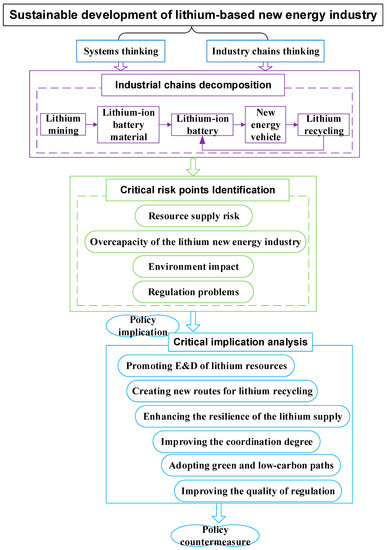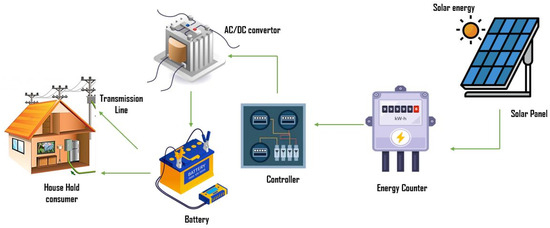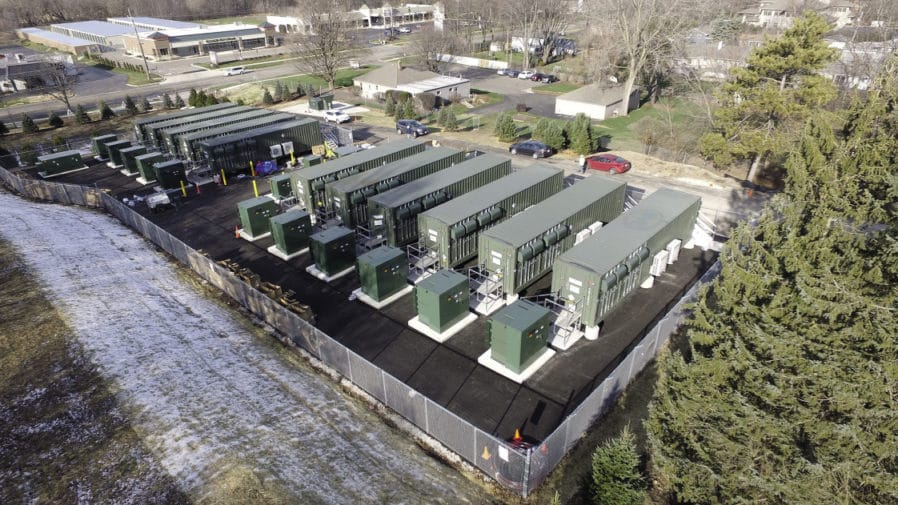Introduction
The global transition to a more sustainable and energy-efficient future heavily relies on the adoption of advanced battery technologies. Batteries play a pivotal role in revolutionizing the way we store and utilize energy, driving progress in renewable energy integration, electric transportation, and grid resilience. To accelerate this transition, it is essential to establish robust regulatory frameworks and policies that create a favorable environment for battery adoption.
The shift toward a sustainable and energy-efficient future is not merely a vision; it’s an imperative for our planet’s well-being. At the heart of this transformation lies the transformative potential of advanced battery technologies. These unassuming powerhouses are the linchpin in our quest to revolutionize how we store, distribute, and utilize energy. Their role extends far beyond powering our gadgets; they are the catalysts for progress in multiple domains critical to a sustainable future.
Renewable energy integration stands as one of the most pivotal areas where batteries are driving change. Solar panels and wind turbines have been instrumental in harnessing clean energy from nature, but their variable nature has posed a challenge. Batteries provide the missing link, allowing us to capture and store excess energy when the sun is shining and the wind is blowing. This stored energy can then be tapped into when needed, leveling out the intermittency of renewable sources and ensuring a reliable supply of clean electricity. This synergy between batteries and renewables is reshaping the energy landscape, reducing our reliance on fossil fuels, and mitigating the impact of climate change.
The realm of electric transportation is another arena where batteries are reshaping our future. Electric vehicles (EVs) are gaining traction, offering a sustainable alternative to traditional internal combustion engines. Batteries power these EVs, and advancements in battery technology are extending their range, reducing charging times, and enhancing their affordability. With the electrification of transportation gaining momentum, we are poised to reduce emissions from the transportation sector significantly, mitigating one of the largest sources of greenhouse gas emissions.
Grid resilience is yet another facet where batteries prove their mettle. Climate-related disasters and grid vulnerabilities have made resilient energy infrastructure a priority. Batteries play a vital role by providing backup power during outages, stabilizing the grid, and ensuring that critical facilities remain operational. This is not just about keeping the lights on; it’s about safeguarding lives, communities, and the functioning of our modern society in the face of adversity.
To harness the full potential of advanced batteries and accelerate this transition toward a sustainable future, it is crucial to establish robust regulatory frameworks and policies. These frameworks should incentivize research and development, foster innovation, and promote the adoption of battery technologies. Investment in infrastructure for battery manufacturing and recycling is equally essential to ensure a sustainable supply chain.
Moreover, policies should encourage the integration of batteries into renewable energy projects, electric transportation initiatives, and grid resilience planning. Financial incentives, tax credits, and subsidies can stimulate investment in batteries and make them more accessible to consumers and businesses alike.
In conclusion, the adoption of advanced battery technologies is a linchpin in our journey toward a sustainable, energy-efficient future. Their impact reverberates through renewable energy integration, electric transportation, and grid resilience. To accelerate this transition and unlock the full potential of batteries, governments, industries, and communities must work together to establish favorable regulatory frameworks and policies that empower innovation and drive progress. Together, we can build a cleaner, more resilient, and sustainable world powered by advanced batteries.
Additionally, you can find further information on this topic by visiting this page: Building back better: A sustainable, resilient recovery after COVID-19
Before delving into regulatory frameworks and policies, it is crucial to understand why batteries are pivotal to our sustainable future:
Embarking on a discussion of regulatory frameworks and policies related to batteries necessitates first establishing a firm understanding of their paramount importance in shaping our sustainable future. Batteries are not just energy storage devices; they are the linchpin upon which our transition to a cleaner, more eco-conscious world hinges. To fully grasp their significance, let’s explore why batteries are at the forefront of our journey towards sustainability:
Unlocking Renewable Energy: Renewable energy sources like solar and wind are abundant and clean, but they’re also intermittent. Batteries bridge the gap by storing surplus energy when the sun shines or the wind blows and releasing it when demand peaks or during cloudy and calm days. This not only makes renewable energy sources reliable but also accelerates our shift away from fossil fuels, which are a primary driver of climate change.
Electrifying Transportation: The transportation sector is a major contributor to greenhouse gas emissions. Electric vehicles (EVs), powered by batteries, offer a sustainable alternative. They reduce air pollution, lower our dependence on oil, and pave the way for a greener, more sustainable future of mobility. The widespread adoption of EVs is unthinkable without the advancements in battery technology.
Enhancing Grid Resilience: Our power grids face increasing challenges due to extreme weather events and growing electricity demand. Batteries support grid resilience by acting as backup power sources, smoothing out fluctuations, and enabling a more decentralized, distributed energy system. This not only ensures uninterrupted power supply but also reduces the risk of blackouts and enhances overall grid stability.
Optimizing Energy Usage: Batteries are instrumental in optimizing energy usage in both residential and commercial settings. They store excess energy during low-demand periods when electricity rates are low and release it during peak hours when rates are higher. This not only lowers energy bills but also reduces the need for additional power generation, which often relies on fossil fuels.
Promoting Energy Independence: Energy independence is a critical component of sustainability. Batteries empower individuals, communities, and even entire nations to generate and store their own clean energy, reducing reliance on centralized power sources and enhancing energy security.
Fostering Innovation: The development and deployment of battery technology stimulate innovation across various sectors. They drive advancements in materials science, electronics, and software, fostering economic growth and job creation while positioning nations as leaders in the global clean energy revolution.
Mitigating Climate Change: At the core of it all, batteries play a pivotal role in mitigating climate change. They enable the widespread integration of renewable energy sources, reduce emissions from transportation, and contribute to energy-efficient practices, all of which are essential in achieving global climate goals and safeguarding our planet’s future.
With this understanding firmly in place, we can now explore the intricate web of regulatory frameworks and policies that are instrumental in harnessing the full potential of batteries for a sustainable future. Batteries are not just components of the transition; they are the catalysts, the enablers, and the solution to many of the challenges we face in creating a world that thrives on clean, efficient, and sustainable energy.
To delve further into this matter, we encourage you to check out the additional resources provided here: Building back better: A sustainable, resilient recovery after COVID-19

Batteries enable the efficient storage of energy generated from intermittent sources like wind and solar power. This stored energy can be deployed when the sun isn’t shining or the wind isn’t blowing, ensuring a continuous and reliable energy supply.
Batteries stand as the linchpin in the transition to a sustainable and reliable energy grid, and their role in enabling the efficient storage of energy from intermittent renewable sources cannot be overstated. Here’s a deeper look at how batteries are shaping the future of energy storage:
Unlocking Renewable Potential: Renewable energy sources such as wind and solar power are abundant and eco-friendly, but they are inherently variable. The sun sets, and the wind calms, leading to fluctuations in energy generation. Batteries bridge this gap by storing excess energy produced during periods of abundance. This stored energy acts as a reservoir, available for release when needed, ensuring a consistent and reliable energy supply.
Grid Stability: The integration of batteries into the energy grid enhances its stability. Grid operators can rely on stored energy to manage the peaks and troughs in energy demand, making the grid more resilient to sudden fluctuations. This not only prevents blackouts or brownouts but also reduces the need for backup fossil fuel power plants, which can be environmentally damaging and costly to operate.
Energy Independence: Batteries empower consumers to take control of their energy usage and reduce reliance on external sources. Residential solar panels paired with home battery systems, for example, allow homeowners to generate and store their electricity, making them less dependent on traditional grid power. This energy independence not only offers cost savings but also provides a sense of security during grid outages.
Grid Decentralization: The proliferation of distributed energy resources, including residential and commercial battery systems, contributes to grid decentralization. This shift away from a centralized energy model disperses power generation and storage throughout communities, enhancing overall grid resilience. In essence, it democratizes energy, allowing individuals and businesses to actively participate in energy generation, consumption, and sharing.
Transition to Clean Energy: By storing excess energy from renewable sources, batteries facilitate the transition to a cleaner energy mix. They enable a more seamless integration of renewables into the grid, reducing reliance on fossil fuels and mitigating greenhouse gas emissions. Batteries, in conjunction with renewable sources, are instrumental in achieving sustainability goals and combatting climate change.
In conclusion, batteries are the lynchpin of the energy transition, ensuring that the potential of renewable sources like wind and solar power can be fully harnessed. Their ability to efficiently store and deploy energy when needed not only enhances grid stability but also accelerates our path towards a sustainable, reliable, and eco-friendly energy future. As we continue to innovate and expand the role of batteries in energy storage, we strengthen the foundation of a cleaner and more resilient energy ecosystem for generations to come.
Looking for more insights? You’ll find them right here in our extended coverage: Legal responses to energy security and sustainability in Nigeria’s …

Electric vehicles (EVs) powered by advanced batteries are central to reducing greenhouse gas emissions in the transportation sector. They offer a cleaner alternative to traditional internal combustion engine vehicles, helping combat air pollution and mitigate climate change.
nullExplore this link for a more extensive examination of the topic: Global EV Outlook 2020 – Analysis – IEA

Batteries enhance the resilience of power grids by providing backup energy during outages and stabilizing the grid during peak demand periods. This resilience is essential in the face of increasing climate-related disasters.
Batteries stand as silent guardians of our power grids, offering a crucial layer of resilience in an increasingly volatile world. Their multifaceted role in grid operations becomes most evident during times of crisis, where their contributions are nothing short of indispensable.
First and foremost, batteries provide a lifeline during power outages. When storms rage, wildfires threaten, or other unforeseen disasters strike, the grid may be compromised, leaving homes, businesses, and critical infrastructure in the dark. In these moments, battery storage systems spring into action, seamlessly supplying backup energy. Whether installed at the community level or within individual households, these batteries keep essential systems running, from hospitals and emergency shelters to communication networks and water treatment facilities. This reliability is not just a matter of convenience; it’s a lifeline that can save lives.
Beyond disaster recovery, batteries play a pivotal role in stabilizing the grid during peak demand periods. As our reliance on electricity continues to grow, particularly with the proliferation of electric vehicles and the electrification of industries, grid operators face mounting challenges in managing load fluctuations. During heatwaves, for instance, when air conditioning demand soars, or in the evenings when households and businesses collectively turn on lights and appliances, the grid can become strained. Batteries offer a rapid-response solution, injecting stored energy into the grid within milliseconds to alleviate strain and maintain voltage stability. This grid stabilization ensures that even during periods of high demand, the lights stay on, and the wheels of commerce keep turning.
The importance of battery-backed grid resilience cannot be overstated, especially in the face of increasing climate-related disasters. With climate change driving more frequent and severe weather events, from hurricanes and floods to wildfires and extreme heatwaves, our energy infrastructure is increasingly vulnerable. Batteries offer a versatile and adaptable solution, capable of responding to a wide range of challenges.
Furthermore, batteries complement the integration of renewable energy sources, such as solar and wind power, into the grid. These sources can be intermittent, producing electricity only when the sun shines or the wind blows. Battery storage bridges the gap by capturing excess renewable energy when it’s available and releasing it when needed, ensuring a consistent and reliable energy supply.
In conclusion, batteries are unsung heroes in the quest for a resilient and reliable energy infrastructure. Their ability to provide backup power during outages, stabilize the grid during peak demand, and integrate renewable energy sources enhances the grid’s resilience in the face of climate-related disasters. As our world becomes increasingly electrified and interconnected, the role of batteries in safeguarding our energy systems continues to grow in significance, ensuring that even in the most challenging circumstances, the lights stay on, and our communities remain resilient.
Should you desire more in-depth information, it’s available for your perusal on this page: Global EV Outlook 2020 – Analysis – IEA

Batteries optimize energy usage in various sectors, from industrial processes to commercial buildings, by storing energy during off-peak hours and releasing it during high-demand times. This leads to energy savings and reduced costs.
The optimization of energy usage through batteries represents a pivotal shift in how various sectors manage their power consumption. It’s not just about storing energy during off-peak hours and releasing it during high-demand times; it’s about a fundamental change in how we think about and utilize electricity.
Peak Demand Management: Batteries are the ultimate tool for managing peak electricity demand, which can be a significant cost factor for businesses and utilities. By storing excess energy during periods of low demand, such as at night or during weekends, and discharging it when demand surges, batteries can effectively “shave” the peak demand. This not only reduces electricity bills but also alleviates the strain on the grid during peak periods, enhancing grid reliability.
Grid Stabilization: Beyond cost savings, batteries also play a crucial role in stabilizing the grid. They provide grid operators with fast-response capabilities to balance supply and demand, preventing fluctuations and ensuring a steady voltage and frequency. This is especially important as we integrate more intermittent renewable energy sources into the grid, which can cause variability in power supply.
Resilience and Backup: In addition to cost savings and grid stability, batteries offer businesses and critical infrastructure unparalleled resilience during power outages. They can act as backup power sources, instantly supplying electricity when the main grid fails. For essential facilities like hospitals, data centers, and emergency services, this can be a life-saving feature.
Carbon Footprint Reduction: By enabling efficient energy usage and reducing the need for expensive peaker plants, batteries contribute to a lower carbon footprint. This aligns with global efforts to combat climate change and reduce greenhouse gas emissions, as a cleaner and more efficient energy system inherently leads to reduced environmental impact.
Energy Independence: Batteries also empower businesses and homeowners to become more energy independent. They can generate electricity through solar panels, store excess energy in batteries, and use it when needed. This reduces dependence on centralized power systems and fossil fuels, contributing to energy security and a diversified energy mix.
Economic Competitiveness: The optimization of energy usage through batteries enhances the economic competitiveness of industries. By reducing energy costs and increasing operational efficiency, businesses can allocate resources to other critical areas, such as research and development or employee benefits.
In conclusion, the role of batteries in optimizing energy usage extends far beyond mere cost savings. They are catalysts for a more efficient, resilient, and sustainable energy ecosystem. As we continue to advance battery technology and expand its applications, we unlock new possibilities for businesses, homeowners, and communities to thrive in an era of rapidly evolving energy needs and environmental challenges. Battery optimization is not just about reducing costs; it’s about creating a smarter, more reliable, and greener energy future for all.
Looking for more insights? You’ll find them right here in our extended coverage: BUILDING RESILIENT SUPPLY CHAINS, REVITALIZING …

To foster a favorable environment for battery adoption, regulatory frameworks must address key aspects of the technology’s deployment:
To foster a favorable environment for battery adoption, regulatory frameworks must play a pivotal role in addressing key aspects of the technology’s deployment. These aspects encompass not only the technical and operational facets of batteries but also the broader implications they have on energy systems, sustainability, and consumer interests. Here are the critical elements that regulatory frameworks need to consider to facilitate the widespread adoption of batteries:
1. Safety Standards: Safety should be paramount in battery deployment. Regulatory bodies must establish rigorous safety standards that cover the design, manufacturing, installation, and operation of battery systems. These standards should encompass fire safety, chemical handling, and protection against thermal runaway events, ensuring that batteries are not only efficient but also safe for use in various settings.
2. Grid Integration: Effective integration of batteries into the grid is crucial for optimizing their benefits. Regulations should encourage grid operators to embrace battery technology as a valuable grid asset. This includes establishing rules for grid services provided by batteries, such as frequency regulation, peak shaving, and grid stability support. Clear guidelines on interconnection and grid code compliance can streamline the integration process.
3. Environmental Impact: Battery production, disposal, and end-of-life management must adhere to environmental regulations. Governments should consider the environmental impact of battery manufacturing processes, including resource extraction and emissions. Additionally, regulations should promote responsible recycling and disposal practices to minimize the environmental footprint of battery technology.
4. Energy Market Participation: Regulatory frameworks should enable batteries to participate effectively in energy markets. This involves defining the roles and responsibilities of battery operators, ensuring fair compensation for services provided to the grid, and addressing market barriers that may hinder battery adoption, such as capacity markets and market design issues.
5. Consumer Protections: Regulations should safeguard consumer interests. This includes requirements for transparent pricing, warranties, and performance guarantees. Additionally, regulations should address the rights and responsibilities of consumers who install batteries, especially in residential settings, ensuring that they have control over their energy choices and access to reliable information.
6. Energy Storage Targets: Many regions are setting ambitious energy storage targets as part of their renewable energy and climate change mitigation efforts. Regulatory frameworks can play a pivotal role in setting and enforcing these targets, incentivizing utilities and stakeholders to invest in energy storage solutions and meet clean energy goals.
7. Research and Development Incentives: To encourage innovation and advancement in battery technology, governments can provide incentives and funding for research and development. Regulatory bodies can facilitate these efforts by defining the criteria for eligibility and the scope of research areas that align with energy policy goals.
8. Interconnection Standards: Battery systems often interface with other distributed energy resources, such as solar panels or electric vehicle chargers. Regulatory frameworks should establish clear interconnection standards to ensure seamless integration and optimal performance of these systems.
9. Resilience and Reliability: In regions prone to extreme weather events and grid vulnerabilities, regulations should promote the deployment of batteries for resilience and reliability purposes. This may include incentives for backup power solutions and microgrid development to enhance community resilience during emergencies.
10. Long-Term Planning: Regulatory frameworks should encourage utilities and grid operators to incorporate batteries into their long-term planning processes. This involves assessing the benefits of energy storage in grid infrastructure upgrades, demand management, and load-balancing strategies.
In conclusion, regulatory frameworks are pivotal in shaping the trajectory of battery adoption and utilization. By addressing key aspects such as safety, grid integration, environmental impact, market participation, consumer protections, energy storage targets, research incentives, interconnection standards, resilience, and long-term planning, regulators can create an environment conducive to the widespread deployment of batteries. These frameworks not only ensure that batteries are integrated safely and efficiently but also drive progress toward a cleaner, more reliable, and sustainable energy future.
Should you desire more in-depth information, it’s available for your perusal on this page: A Framework for the Safe and Efficient Global Movement of Batteries

Governments can incentivize battery adoption by offering subsidies, tax credits, and grants to businesses and consumers. These financial incentives help offset the initial investment cost, making batteries more accessible.
nullLooking for more insights? You’ll find them right here in our extended coverage: Incentives and strategies for financing the renewable energy …

Regulations should support the seamless integration of battery storage into existing power grids. This includes standardized interconnection procedures, clear rules for grid operators, and fair compensation mechanisms for energy storage services.
Creating a regulatory framework that fosters the smooth and efficient integration of battery storage into existing power grids is pivotal for advancing the transition to a more resilient, sustainable, and flexible energy system. Such regulations should encompass several key elements to ensure the successful coexistence of energy storage with traditional grid infrastructure.
First and foremost, standardized interconnection procedures are essential. These procedures establish clear guidelines for how energy storage systems can be connected to the grid. Standardization reduces ambiguity, simplifies the process for both energy storage developers and grid operators, and expedites the deployment of these systems. By streamlining interconnection, regulators can lower barriers to entry for energy storage projects, encouraging greater adoption and competition in the market.
Clear rules and guidelines for grid operators are equally crucial. These rules help grid operators understand their roles and responsibilities when managing energy storage resources. For instance, grid operators need to know how to dispatch energy from storage systems efficiently, coordinate with renewable energy sources, and maintain grid stability. Well-defined rules ensure that energy storage assets are utilized optimally and that their capabilities are harnessed to enhance grid reliability.
Another essential aspect of regulatory support is the establishment of fair compensation mechanisms for energy storage services. Energy storage systems provide various grid services, such as frequency regulation, peak shaving, and grid stabilization. These services benefit the overall grid and contribute to its resilience and efficiency. Regulators should implement mechanisms that fairly compensate energy storage providers for the value they bring to the grid. Fair compensation not only incentivizes investment in energy storage but also helps create a level playing field for all market participants.
Furthermore, regulatory frameworks must evolve to accommodate the evolving nature of energy storage technology. As energy storage systems become more sophisticated and capable of providing a broader range of services, regulations should adapt accordingly. Regulators should remain agile and open to innovations, ensuring that energy storage can reach its full potential in addressing grid challenges and supporting the integration of renewable energy sources.
Lastly, regulatory bodies should foster collaboration and dialogue between stakeholders, including utilities, energy storage developers, and consumer advocacy groups. Engaging all relevant parties in the regulatory process can lead to more comprehensive and balanced regulations that consider the diverse perspectives and needs of the energy ecosystem.
In conclusion, well-crafted regulations are essential to enable the seamless integration of battery storage into existing power grids. These regulations should encompass standardized interconnection procedures, clear guidelines for grid operators, and fair compensation mechanisms. By fostering a supportive regulatory environment, policymakers can accelerate the adoption of energy storage technology, enhance grid resilience, and facilitate the transition to a cleaner and more reliable energy system.
Additionally, you can find further information on this topic by visiting this page: Policies to promote electric vehicle deployment – Global EV Outlook …

Robust safety and environmental standards are critical to ensure the responsible development and disposal of batteries. Regulations should cover manufacturing, recycling, and disposal practices to minimize environmental impact.
The responsible development, usage, and disposal of batteries hinge upon the establishment and adherence to robust safety and environmental standards. These regulations are vital to safeguard our planet and its inhabitants as we navigate the era of advanced energy storage. Here’s an in-depth exploration of why these standards are essential and how they should encompass various aspects of the battery lifecycle:
Manufacturing Practices: Battery safety and environmental standards must be applied from the moment a battery is conceived in a manufacturing facility. This phase necessitates stringent guidelines to ensure the responsible sourcing of raw materials, such as lithium and cobalt, and to minimize the environmental impact of mining and extraction processes. Additionally, manufacturers must adhere to practices that prioritize worker safety and the reduction of emissions during battery production.
Recycling Protocols: Responsible battery disposal extends far beyond landfilling. Robust standards should promote recycling as the primary means of handling end-of-life batteries. Recycling not only conserves valuable resources but also mitigates the environmental impact of improper disposal. To this end, regulations should encourage the establishment of recycling facilities that can efficiently process and recover materials from retired batteries.
End-of-Life Disposal: Environmental standards should dictate proper disposal practices for batteries that have reached the end of their operational life. This includes guidelines for safe collection, transport, and disposal of batteries in a manner that prevents contamination of soil and water sources. Battery disposal sites should be carefully selected, designed, and managed to prevent leakage of hazardous materials.
Transportation Safety: Battery transportation poses unique safety challenges, especially for electric vehicle batteries. Regulations should cover the safe packaging, handling, and transportation of batteries to minimize the risk of accidents, fires, or hazardous material releases during transit. Proper training and safety measures for those involved in battery logistics are paramount.
Battery Design: Battery safety standards should also encompass the design phase, ensuring that batteries are built with safety features that minimize the risk of thermal runaway, overheating, or fire. This includes features like thermal management systems, pressure relief mechanisms, and fail-safe designs to prevent catastrophic failures.
Certification and Testing: Stringent testing and certification processes should be mandated to ensure that batteries meet safety and environmental standards. Independent organizations or governmental bodies should conduct thorough assessments to verify compliance with these regulations.
Research and Development: Encouraging ongoing research and development is crucial for advancing battery technologies that are safer and more environmentally friendly. Regulatory frameworks should incentivize innovation that focuses on reducing the use of hazardous materials, improving recyclability, and enhancing battery performance.
Consumer Education: Regulatory efforts should extend to educating consumers about proper battery usage, disposal, and recycling. Consumer awareness campaigns can help ensure that individuals understand the importance of recycling and safely disposing of batteries.
In conclusion, comprehensive safety and environmental standards are the cornerstones of responsible battery development and disposal. By addressing every phase of the battery lifecycle, from manufacturing and usage to recycling and disposal, these regulations play a pivotal role in minimizing the environmental footprint of batteries and safeguarding public health. They are not just a legal requirement but a moral and ethical imperative as we embrace the promise of advanced energy storage technologies in a sustainable and responsible manner.
Looking for more insights? You’ll find them right here in our extended coverage: Americans with Disabilities Act Title II Regulations | ADA.gov

To enhance grid resilience, regulations should require utilities to invest in energy storage solutions, setting targets for grid reliability during emergencies and mandating the deployment of battery systems in critical infrastructure.
“To bolster grid resilience and safeguard against the growing threat of extreme weather events and emergencies, it is imperative that regulatory frameworks evolve to prioritize energy storage solutions. Forward-thinking regulations should not only encourage but mandate utilities to invest in these innovative technologies. This transformative shift in regulatory policy involves several key components:
Investment Mandate: Regulations should mandate utilities to allocate a portion of their budgets specifically to invest in energy storage systems. These investments would serve as a proactive step to fortify the grid against potential disruptions, ensuring that critical infrastructure remains operational during emergencies.
Targeted Reliability: Regulations should set clear and measurable targets for grid reliability during emergencies. This means defining metrics such as minimum uptime, response time, and the capacity to withstand extreme events. These targets provide a benchmark for utilities, obliging them to meet and exceed specified reliability thresholds.
Deployment in Critical Infrastructure: To ensure the robustness of essential services, regulations should stipulate the deployment of battery systems in critical infrastructure. This encompasses hospitals, emergency response centers, water treatment facilities, and other vital facilities. Batteries act as a reliable power source during outages, safeguarding public health and safety.
Resilience Standards: Regulatory bodies should establish resilience standards that utilities must adhere to. These standards would encompass the design, deployment, and maintenance of energy storage solutions. Adherence to these standards would be paramount in enhancing the grid’s ability to withstand disruptions and recover swiftly.
Incentives for Innovation: Regulations can also incorporate incentives to spur innovation in energy storage technology. This could include tax credits, grants, or performance-based incentives that encourage utilities to adopt advanced battery systems and grid management strategies.
Community Microgrids: Regulations can encourage the development of community microgrids, which are self-contained energy systems that can disconnect from the main grid during emergencies. By integrating energy storage into these microgrids, communities can maintain essential services autonomously.
Flexible Energy Procurement: Regulatory frameworks should enable utilities to procure energy storage solutions flexibly, accommodating a range of technologies and deployment strategies. This flexibility allows utilities to tailor their investments to regional needs and grid vulnerabilities.
Regular Audits and Compliance: To ensure accountability, regulations should require utilities to undergo regular audits of their energy storage deployments and grid resilience measures. Non-compliance should result in penalties and corrective actions.
Public-Private Partnerships: Regulatory policies can foster public-private partnerships that encourage collaboration between utilities, technology providers, and research institutions. These partnerships can accelerate the development and deployment of cutting-edge energy storage solutions.
By transforming regulations to prioritize energy storage, we not only bolster grid resilience but also position our communities to thrive in an era of increasing climate-related challenges. The proactive integration of energy storage systems into critical infrastructure, the setting of reliability targets, and the enforcement of resilience standards are essential steps in ensuring that our grids remain dependable and resilient during emergencies, safeguarding the well-being and prosperity of our societies.”
Don’t stop here; you can continue your exploration by following this link for more details: fostering economic resilience in a world of open and integrated …

In addition to regulatory frameworks, effective policies can further encourage battery adoption:
nullExplore this link for a more extensive examination of the topic: BUILDING RESILIENT SUPPLY CHAINS, REVITALIZING …

Governments can establish ambitious renewable energy targets and mandates that encourage the integration of battery storage systems. These targets drive investments in renewable energy sources and the necessary storage infrastructure.
The role of governments in advancing renewable energy and battery storage integration is pivotal, and their actions can have a profound impact on shaping the energy landscape. Here’s an extended look at how government initiatives and policies can drive the transition toward sustainable energy systems:
Ambitious Renewable Energy Targets: Governments, at various levels, can set ambitious renewable energy targets, not only for the production of clean energy but also for its integration into the grid. These targets serve as clear directives that motivate energy stakeholders, including utilities, businesses, and consumers, to actively participate in the transition to renewable sources. Such objectives often include specific percentages of renewable energy in the overall energy mix, fostering a sense of urgency and commitment.
Mandates for Clean Energy Adoption: Legislative mandates and regulations can compel utilities and corporations to incorporate renewable energy sources into their energy portfolios. By imposing clean energy adoption requirements, governments ensure that a substantial portion of energy generation is derived from renewable sources. This, in turn, accelerates investments in renewable energy projects, including solar, wind, and hydropower, which serve as ideal partners for battery storage.
Incentive Programs: Governments can institute incentive programs that encourage the installation of battery storage systems alongside renewable energy projects. These incentives may come in the form of tax credits, rebates, grants, or feed-in tariffs. Such programs make battery storage more financially accessible and attractive to individuals, businesses, and utilities, thereby increasing its adoption rate.
Research and Development Funding: Public investment in research and development (R&D) for battery technology and energy storage solutions is crucial for advancing these technologies. Governments can allocate funding to universities, research institutions, and private companies to spur innovation in battery chemistry, energy density, and cost-effectiveness. This investment fuels breakthroughs that drive down battery prices and enhance their performance, making them more competitive with traditional energy sources.
Grid Modernization Initiatives: As part of broader grid modernization efforts, governments can allocate resources to enhance the grid’s compatibility with renewable energy sources and energy storage systems. This may involve infrastructure upgrades, smart grid technologies, and grid management solutions that optimize the integration of intermittent renewable energy generation and improve grid stability.
Carbon Pricing and Emissions Reduction Policies: Carbon pricing mechanisms, such as carbon taxes or cap-and-trade systems, create economic incentives for reducing carbon emissions. These policies encourage the adoption of clean energy sources like renewables and the deployment of energy storage to minimize reliance on fossil fuels. By effectively internalizing the environmental costs of carbon emissions, governments promote a shift toward cleaner, more sustainable energy alternatives.
International Agreements: Governments can participate in international agreements and partnerships aimed at combating climate change and promoting renewable energy adoption. Commitments made under such agreements reinforce national renewable energy targets and foster collaboration on renewable energy projects, including cross-border interconnections and grid enhancements.
Public Awareness and Education: Government agencies can play a role in raising public awareness and educating citizens about the benefits of renewable energy and energy storage. These efforts contribute to a more informed and supportive public, which, in turn, exerts pressure on policymakers to prioritize renewable energy and battery storage integration.
In summary, governments wield significant influence in shaping the transition to a sustainable energy future. Ambitious renewable energy targets, mandates, incentives, R&D funding, grid modernization, emissions reduction policies, international cooperation, and public engagement all contribute to the advancement of renewable energy sources and energy storage. By actively championing these initiatives, governments drive investments, stimulate innovation, and accelerate the integration of renewable energy and battery storage systems, ultimately fostering a more sustainable and resilient energy landscape.
For additional details, consider exploring the related content available here Global Energy Transformation: A Roadmap to 2050

Policies promoting electric vehicle adoption, such as rebates, charging infrastructure development, and emission reduction targets, indirectly boost battery demand by driving EV sales.
Policies aimed at promoting electric vehicle (EV) adoption have far-reaching implications beyond simply encouraging more people to drive electric. These policies, which include incentives, infrastructure development, and ambitious emission reduction targets, have a profound indirect effect on battery demand, further reinforcing the electric vehicle revolution:
Increased EV Sales: At the heart of these policies is the goal of increasing the adoption of electric vehicles. Incentives, such as tax rebates or purchase incentives, make EVs more attractive to consumers, boosting sales. As EVs become a more appealing choice, the demand for batteries inherently rises to power these vehicles.
Charging Infrastructure: One of the primary concerns for potential EV buyers is the availability of charging infrastructure. Policy-driven initiatives that expand and improve charging networks, both public and private, alleviate range anxiety and make EV ownership more convenient. This expanded infrastructure drives consumer confidence, leading to higher EV adoption rates and, consequently, increased demand for batteries.
Emission Reduction Targets: Many governments worldwide have set ambitious emission reduction targets to combat climate change. These targets often include regulations that require automakers to produce a certain percentage of electric or zero-emission vehicles. To meet these mandates, automakers need to invest heavily in EV production, which, in turn, necessitates an expanded supply of batteries.
Economic Growth: The EV industry is a driver of economic growth, with potential benefits spanning manufacturing, supply chain development, and job creation. Policymakers recognize the economic potential of the EV sector and provide incentives and support to foster its growth. This, in turn, results in increased battery production to meet the rising demand for EVs.
Environmental Stewardship: Governments are increasingly committed to environmental stewardship, and supporting EV adoption aligns with these goals. By reducing tailpipe emissions, EVs contribute to improved air quality and reduced greenhouse gas emissions. This environmental focus creates a positive feedback loop, further incentivizing policymakers to support EVs and, subsequently, battery production.
Technological Advancements: Policy-driven investments in research and development often lead to technological advancements in battery technology. These advancements can result in batteries that are more energy-dense, longer-lasting, and cost-effective. Such improvements make EVs more appealing and drive greater demand for them.
Global Competitiveness: Policymakers view the transition to electric mobility as a means to maintain or enhance global competitiveness in the automotive sector. By supporting EV adoption and battery manufacturing, countries aim to secure their position in the emerging electric vehicle market.
Innovation and Collaboration: Government policies encourage innovation and collaboration among stakeholders, including automakers, battery manufacturers, and research institutions. These partnerships lead to advancements in battery technology, making EVs more practical and desirable.
Consumer Awareness: Policy-driven EV initiatives often come with awareness campaigns that educate consumers about the benefits of electric vehicles. As consumers become more informed about the advantages of EVs, the demand for these vehicles—and the batteries that power them—increases.
In essence, policies promoting electric vehicle adoption create a ripple effect throughout the automotive and battery industries. They not only accelerate the shift toward cleaner transportation but also stimulate innovation, job growth, and economic development. As a result, they play a pivotal role in driving the increased demand for batteries, reinforcing the importance of electric vehicles in our sustainable transportation future.
For a comprehensive look at this subject, we invite you to read more on this dedicated page: BUILDING RESILIENT SUPPLY CHAINS, REVITALIZING …

Governments and industry organizations should invest in battery research and development to drive innovation, lower costs, and improve energy storage technologies.
Investing in battery research and development is not just a choice but an imperative for governments and industry organizations alike. Here’s why this commitment to innovation is essential:
Fostering Innovation: Battery technology is at the heart of our transition to a more sustainable and electrified future. Investing in research and development drives innovation by pushing the boundaries of what batteries can achieve. It leads to breakthroughs in energy density, longer lifespans, faster charging, and safer materials—all of which are vital for the continued growth of renewable energy, electric mobility, and grid resilience.
Lowering Costs: Research and development efforts have historically led to cost reductions in battery production. This trend must continue. As economies of scale are realized, as new materials and manufacturing processes are discovered, and as energy storage technologies become more efficient, the cost of batteries will decrease. This, in turn, makes renewable energy and electric vehicles more accessible to a broader population.
Enhancing Energy Storage: Batteries are the linchpin of energy storage, allowing excess energy from renewable sources to be captured and used when needed. Advancements in battery technology translate into more efficient and reliable energy storage solutions. This is crucial for mitigating climate change, supporting grid stability, and ensuring a continuous power supply during outages or peak demand periods.
Global Competitiveness: Leading the charge in battery research and development enhances a nation’s or industry’s global competitiveness. As the world shifts towards cleaner energy sources and electrified transportation, those at the forefront of battery innovation are poised to gain a significant competitive advantage. This advantage extends to economic growth, job creation, and technological leadership.
Environmental Responsibility: Sustainable battery development focuses not only on performance but also on environmental responsibility. Investing in green battery technologies that use recycled materials, minimize resource extraction, and are designed for recyclability is essential for reducing the environmental impact of battery production and disposal.
Grid Resilience: Batteries play a vital role in grid resilience. They offer a buffer against power disruptions, ensuring a stable supply during emergencies or extreme weather events. Governments and industry organizations must invest in battery research to bolster grid resilience, safeguard critical infrastructure, and support disaster recovery efforts.
Accelerating Electric Mobility: Electric vehicles (EVs) are central to reducing emissions from the transportation sector. Battery advancements are key to improving EV performance, range, and affordability. Investment in research and development accelerates the transition to electric mobility, reducing our reliance on fossil fuels and curbing air pollution.
In conclusion, investment in battery research and development is an investment in a cleaner, more sustainable, and more innovative future. It drives progress in renewable energy, electric mobility, grid resilience, and environmental responsibility. Governments and industry organizations that prioritize and fund these efforts not only address immediate energy challenges but also position themselves as leaders in a rapidly evolving global landscape. The benefits extend far beyond technological advancement, encompassing economic growth, environmental stewardship, and a brighter future for generations to come.
For a comprehensive look at this subject, we invite you to read more on this dedicated page: Building back better: A sustainable, resilient recovery after COVID-19

Informing consumers and businesses about the benefits of battery adoption through education and awareness campaigns can increase demand and drive market growth.
nullExplore this link for a more extensive examination of the topic: Building back better: A sustainable, resilient recovery after COVID-19

Conclusion
Regulatory frameworks and policies are the cornerstones of fostering a favorable environment for battery adoption. By implementing incentives, ensuring safety standards, and promoting grid resilience, governments can accelerate the transition to a sustainable energy landscape powered by advanced battery technologies. With clear and supportive regulations, batteries will continue to drive progress in renewable energy, electric transportation, and energy efficiency, paving the way for a cleaner and more sustainable future.
The adoption of advanced battery technologies isn’t just about technological innovation; it’s equally reliant on the establishment of robust regulatory frameworks and policies. These frameworks serve as the guiding principles that create an environment conducive to battery adoption, unleashing their full potential to transform our energy landscape.
Incentives are one of the primary tools in a policymaker’s toolkit to drive battery adoption. Governments can provide financial incentives, tax credits, or rebates to individuals, businesses, and utilities that invest in battery systems. These incentives reduce the upfront cost barrier and make batteries more accessible, encouraging their widespread adoption. They are a powerful catalyst for homeowners looking to pair batteries with their solar panels, for businesses considering electric vehicle fleets, and for utilities seeking to bolster grid resilience with energy storage.
Equally important are safety standards. Batteries are sophisticated energy systems that demand stringent safety measures. Regulatory bodies play a vital role in ensuring that batteries meet rigorous safety standards to protect consumers, workers, and the environment. By setting clear safety regulations and regularly inspecting battery manufacturing facilities, governments can instill confidence in the technology, assuring the public that batteries are a secure and reliable addition to their lives.
Grid resilience is a priority, particularly in an era of increasing climate-related disasters. Policymakers can promote grid resilience by incorporating energy storage into their disaster preparedness plans. They can incentivize the installation of batteries at critical infrastructure sites, such as hospitals, emergency response centers, and communication networks. By doing so, governments not only enhance their ability to respond to crises but also mitigate the economic and social costs of power outages.
Furthermore, regulations can encourage the development of recycling and disposal programs for batteries. The lifecycle of batteries includes their end-of-life phase, and responsible recycling is essential to prevent environmental contamination. By establishing recycling programs and setting recycling targets, governments can ensure that batteries are disposed of properly and that valuable materials are recovered and reused.
By providing clear and supportive regulations in these areas, governments can continue to unleash the transformative power of batteries. Batteries will remain at the forefront of driving progress in renewable energy, electric transportation, and energy efficiency.
In the realm of renewable energy, batteries will continue to facilitate the integration of solar and wind power, making these energy sources more reliable and accessible. They’ll store excess energy generated during periods of abundance and release it when needed, ensuring a continuous supply of clean electricity.
In the field of electric transportation, batteries will play an increasingly central role as more individuals and businesses transition to electric vehicles. Supportive policies can accelerate the expansion of EV charging infrastructure, spur innovation in battery technology, and make EVs more affordable for a broader range of consumers.
On the front of energy efficiency, batteries will contribute to reducing energy waste by storing and dispatching electricity during peak demand periods, thus optimizing energy usage.
In conclusion, regulatory frameworks and policies are the linchpin of a sustainable energy future powered by advanced battery technologies. Incentives, safety standards, grid resilience measures, and recycling programs create a favorable environment for battery adoption, fostering innovation and progress. With these clear and supportive regulations in place, batteries will continue to be the driving force behind a cleaner, more sustainable future.
Should you desire more in-depth information, it’s available for your perusal on this page: The ethics of artificial intelligence: Issues and initiatives
More links
Looking for more insights? You’ll find them right here in our extended coverage: Making batteries more sustainable, more durable and better …
